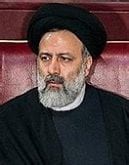rferl.org – An Iranian-flagged oil tanker that has been pursued by the United States in the Mediterranean Sea for weeks now appears to be heading for a port in Turkey.
The crew of the Adrian Darya 1, formerly known as Grace 1, changed its listed destination in its Automatic Identification System (AIS) to Mesrin, Turkey, early on August 24.
Experts note that the crew of a vessel can input any destination in the AIS system.
The ship-tracking website MarineTraffic.com showed the Adrian Darya’s position as just south of Sicily in the Mediterranean Sea.
Mersin is a port city in southern Turkey with an oil terminal. It is about 200 kilometers northwest of a refinery in Baniyas, Syria, where the Adrian Darya 1 was reported to be heading before being seized off Gibraltar in early July.
The United States has issued a warrant to seize the tanker on the grounds that it had links to Iran’s Islamic Revolutionary Guards Corps (IRGC), which it designates as a terrorist organization.
News of a change in the vessel’s destination comes days after Athens denied on August 22 that the tanker was heading for Greece after ship-tracking data earlier in the week showed it heading toward the Greek port of Kalamata.
The Adrian Darya, which is carrying Iranian crude worth some $130 million, was first detained off Gibraltar on July 4 on suspicion it was shipping oil to Syria in violation of European Union sanctions.
It was allowed to leave the British territory on August 19 after giving assurances that it would not head to Syria.
Tensions between Iran and the United States have risen since the United States withdrew from the international nuclear deal in May 2018 and re-imposed sanctions on the country.
Economic Costs
Iran’s economy has suffered under the sanctions, which target its oil and financial sectors.
In July, Tehran announced it was reducing some of its commitments under the nuclear deal.
Exacerbating tensions further, the head of the IRGC, General Hossein
Salami, said on August 24 that Iran had successfully test-fired a “new
missile” a day earlier, but did not elaborate on the type of weapon,
according to the semiofficial Tasnim news agency.
That news comes after Iran debuted on August 22 what it described as a domestically built long-range missile, the Bavar-373.
President Hassan Rohani said in a speech upon the unveiling of the
mobile air-to-surface missile system that, since Iran’s “enemies don’t
accept logic, we cannot respond with logic.”
In June, Iran shot down an American surveillance drone in the Strait of
Hormuz. President Donald Trump came close to retaliating but called off
an air strike at the last moment.
Iranian Foreign Minister Mohmmad Javad Zarif held what he described as
“productive” talks on August 23 in Paris with French President Emanuel
Macron on salvaging the 2015 nuclear deal.
In an effort to prop up the agreement, Macron offered this week to
either soften sanctions on Iran or provide a compensation mechanism “to
enable the Iranian people to live better” in return for full compliance
with the pact.
Tehran contends it has not violated the agreement.
 Shabtabnews In this dark night, I have lost my way – Arise from a corner, oh you the star of guidance.
Shabtabnews In this dark night, I have lost my way – Arise from a corner, oh you the star of guidance.


